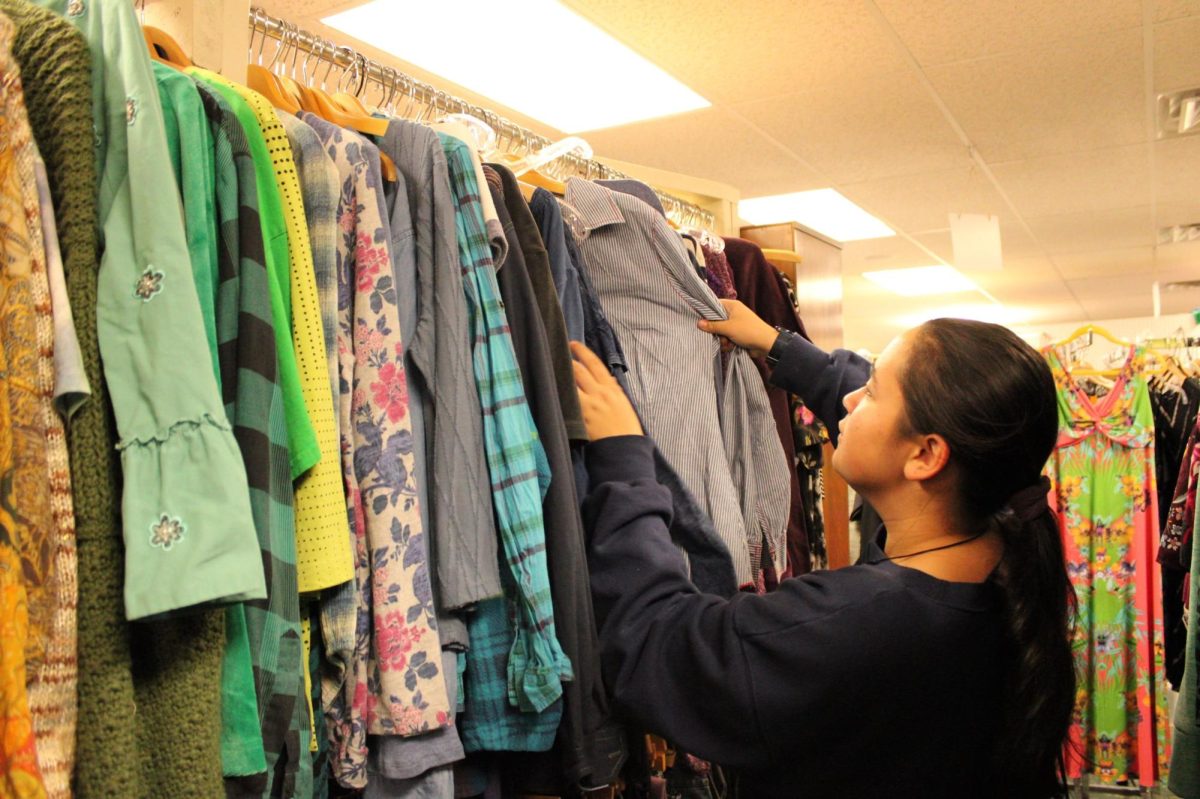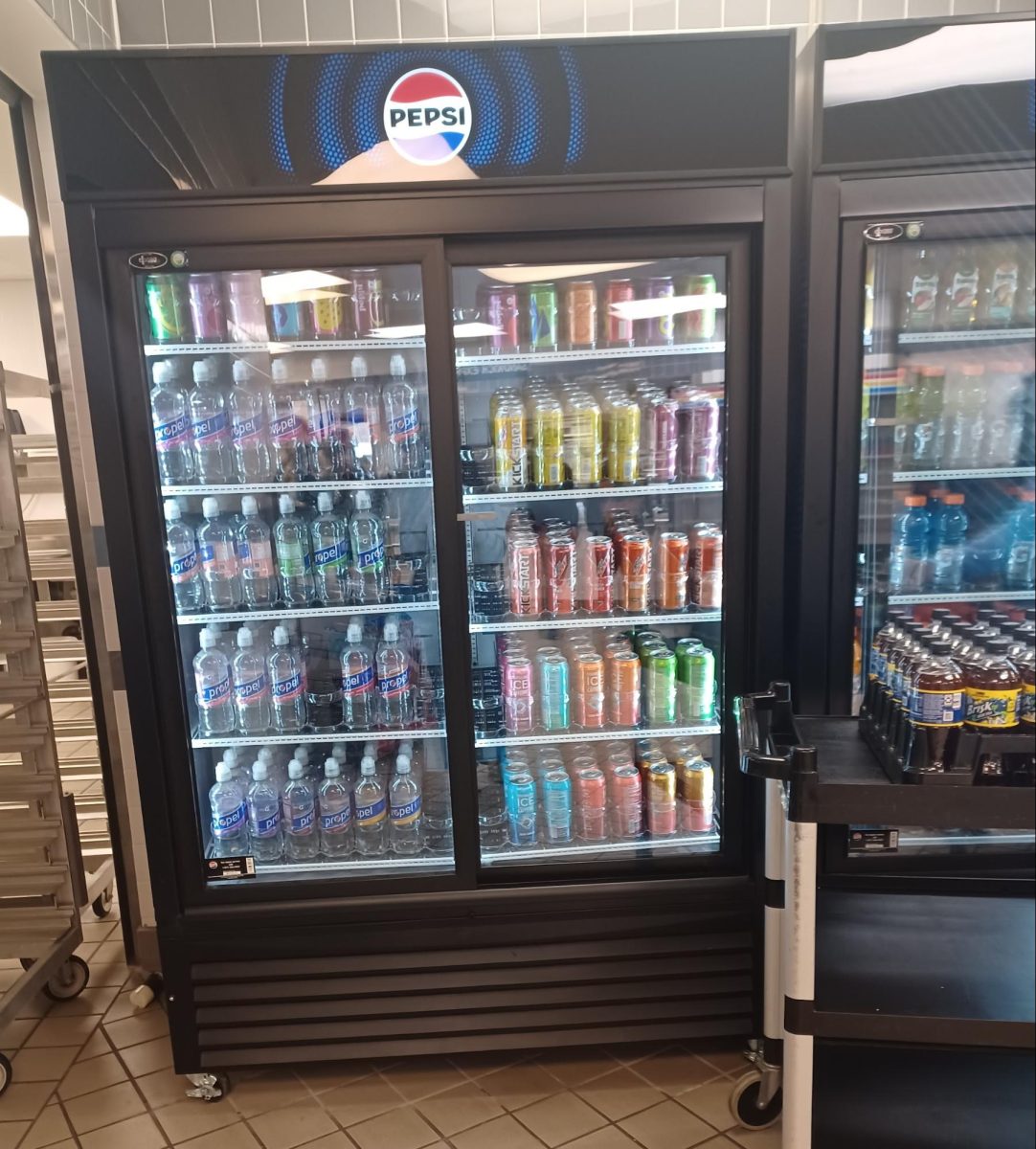The fashion world is constantly changing. Fashion trends and people’s styles naturally evolve, but the physical clothes stay. As people may want to partake in all the new trends inspired by social media and the hottest hit movies, there can come a time that one feels the need or desire to donate their out-of-style clothing.
“Donating clothes is extremely important, especially if the alternative is that those items end up in the landfill,” junior Ava Salchert said. “You have to take that personal initiative to not let your [clothing] be put to waste.”
According to The Roundup, a guide to a green and eco-friendly lifestyle, the world annually produces 92 million tons of textile waste. Those 92 million tons consist of clothes that are oftentimes perceived as too old or too worn to be resold and clothes people just threw away. The United States alone produces 17 million tons of textile waste, which is around 112 pounds per person. 15% is recycled, 19% is burned and 60% ends up in landfills.
“I donate any clothes that are not my current style or do not fit me anymore,” Salchert said. “I donate to Goodwill or non-profits such as Beautiful U in Elburn. I would much rather have these clothes be used by someone else or put towards a good cause than simply being thrown out.”
Donating to organizations like Goodwill, Salvation Army, a local thrift store or h o m e l e s s shelters a r e alternatives to throwing clothes away. Donating clothes to these places gives them a chance to be repurposed. They can also provide someone with better clothes than they had before.
According to Homelessshelterssite.org, homeless shelters are always accepting donations for people in need since the shelters themselves can only provide so much out of pocket.
As cold weather is starting to impact Illinois, Chicago-based organiztions are asking people to think about donating winter items like coats, hats, gloves and scarves for adults and children.
According to Block Club Chicago, an online newspaper that reports local and neighborhood news in Chicago, “The Irving Park Food Pantry’s annual coat drive is underway and will run through November. The group is in need of new or gently used winter coats to help families in the 60641 and 60618 ZIP codes prepare for winter.”
Certain businesses can occasionally have incentives for donating clothes, and in most cases, the proceeds go to a good cause.
“Sometimes it’s not all about the items themselves, such as Beautiful U in Elburn, where the proceeds made from selling items go towards supporting at-risk teen moms,” Salchert said.
Having the proceeds go to organizations that support people in need, like young at-risk mothers, is a reason for someone to donate clothes and other items they no longer need. Another example is the Salvation Army, where the proceeds go to support systems that help people with food and individual or group housing. Some businesses pay you when you bring them clothes you no longer want. For example, Plato’s Closet pays you for items you bring in if they’re in style or relate to the season, especially if you bring big-name brands like Nike, Adidas, Hollister and American Eagle. When you bring your clothes to Goodwill, you can get a receipt for a good value and get credit on your tax returns.
Donating unused clothes is a way for someone to give back to the community and help the environment. Also, not buying from fast fashion brands is a way to avoid textile waste.
“I love thrifting because it allows me to not contribute to fast fashion. Also, my clothes can be made up of quality, one-of-a-kind items,” Salchert said.
According to Earth.org, an environmental news and data platform, thrifting is a great alternative to shopping through fast fashion websites. Fast fashion is one of the major contributors to textiles in landfills and global water waste. This is because of their fast production, cheap quality and the chemicals used to dye the fabrics. Since these companies are creating clothes at a faster rate than ever before, their emissions and waste production rates are higher. Donating your clothes to people in need can lower this contribution because of the continuous movement of the clothes from one person to the next, and thrifting is a big way to help as a consumer.
“You can get a lot of clothes for really cheap. The prices are so much cheaper than buying at name-brand stores,” junior Clara Paulson said. “A lot of my friends love thrifting, and I can’t afford much else a lot of the time. Sometimes thrifting is all I have access to, and it doesn’t bother me.”
Some families only have thrifting and donations to get by on. Some name-brand stores or even places like Walmart can cost too much. Thrift stores are an alternative for families who can’t afford name-brand clothes to have a chance to get access to clothes they like.
When it’s out with the old and in with the new, the clothes we don’t wear anymore could be repurposed and could help people in need. Donated clothes are an alternative that many people rely on and sometimes even live on. Knowing what to do with your clothes, where they can go and why you can donate them are things anyone can learn. Making all those decisions can positively impact people and help reduce certain environmental risk factors.

















